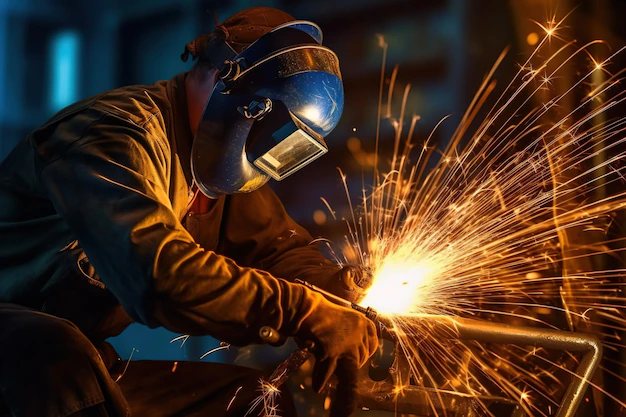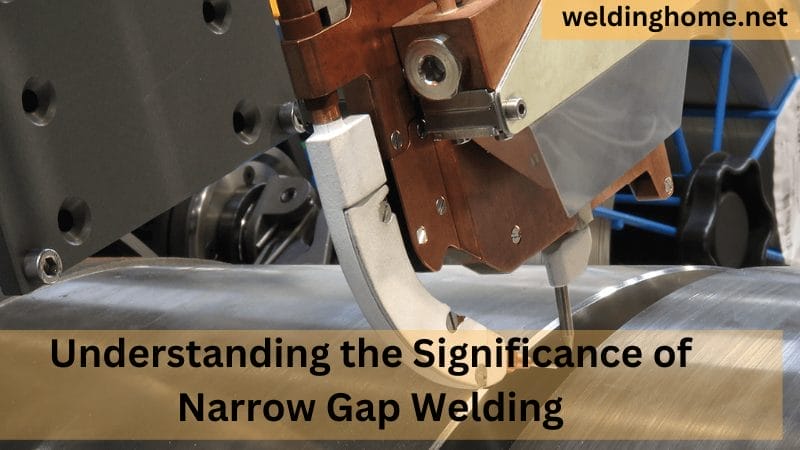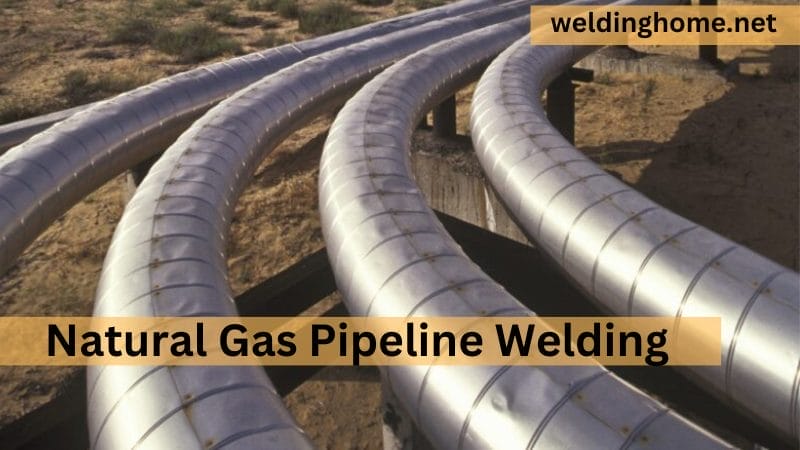Why Orbital TIG Is the Best Welding Type for Pipeline Applications

Welding is essential to contemporary infrastructure, especially in global pipeline networks. Pipelines deliver oil, gas, water, and chemicals, powering industries, economies, and everyday life. The welding process in pipeline applications affects pipeline integrity, safety, and durability.
This article examines pipeline welding and welders’ methods to connect metals and alloys precisely. Each welding technique suits distinct problems, from cross-country oil and gas pipes to labyrinthine urban networks that assure clean water and efficient sewage systems.
Pipeline welding requires precision, material science knowledge, and project comprehension. This article examines why Orbital TIG Is the Best Welding Type for Pipeline Applications.
Whether you are a seasoned pipeline welder, a project manager building critical infrastructure, or a curious observer interested in the complexities of the pipelines that power our modern world, this exploration will illuminate welding’s vital role in society’s lifeblood.
What is the orbital TIG welding?
Orbital welding is a very advanced and highly automated way to join pipes and tubes with great accuracy and consistency. Its main methods are TIG (Tungsten Inert Gas) or GMAW (Gas Metal Arc Welding), known for making clean, high-quality welds. The central part of orbital TIG welding is the machined weld head that goes around the object in a circle or orbit. A computer manages it. This movement evens out the covering and reduces the size of the heat-affected zone (HAZ), which lowers the chance of warping and changes in the material’s properties.
Orbital TIG welding is advantageous in fields where the weld’s quality, clarity, and consistency are crucial. This method makes uniform, clean welds for aircraft, medicines, and food and beverage production. It is the best choice for important uses where the quality and accuracy of the welds are essential because a computer controls the settings, gas protection is used, and the machine is fully automated.

Purpose Orbital TIG welding
Orbital TIG welding produces consistent, high-quality welds on pipes and tubes in several sectors. Precision and automation make this welding method ideal for weld integrity and purity applications. Among orbital welding’s main uses:
- Orbital TIG welding reduces faults, inconsistencies, and human error by ensuring accurate and uniform welds.
- It is perfect for pharmaceutical and food processing applications that need clean, contamination-free welds.
- Orbital TIG welding reduces the heat-affected zone (HAZ), retaining material characteristics and decreasing deformation.
- High automation reduces manual work and ensures project-wide welding.
- It may be used for horizontal, vertical, and overhead welding, making it versatile.
- It is utilized in aircraft and semiconductor production, where product purity and cleanliness are essential.
Orbital welding is designed to satisfy the strict requirements of businesses that need clean, consistent, high-quality, repeatable welds.
Type of electrode used in TIG welding
A tungsten electrode that doesn’t break down is used in TIG (Tungsten Inert Gas) welding. This tungsten electrode is very important for making the electric spark and heating the base metal and, if needed, a different filling metal. In shielded metal arc welding (SMAW) or gas metal arc welding (GMAW), the electrodes are used up and then replaced. In TIG welding, the tungsten electrode stays whole and does not become part of the join. Because it doesn’t break down and a neutral gas (usually argon) is used, it’s easy to control and make clean, high-quality welds. This makes TIG welding a popular choice for tasks that need accuracy and joint purity.
Gas used for orbital welding

A tungsten electrode that doesn’t break down is used in TIG (Tungsten Inert Gas) welding. This tungsten electrode is very important for making the electric spark and heating the base metal and, if needed, a different filling metal. In shielded metal arc welding (SMAW) or gas metal arc welding (GMAW), the electrodes are used up and then replaced. In TIG welding, the tungsten electrode stays whole and does not become part of the join. Because it doesn’t break down and a neutral gas (usually argon) is used, it’s easy to control and make clean, high-quality welds. This makes TIG welding a popular choice for tasks that need accuracy and joint purity.
Why Orbital TIG Is the Best Welding
For several reasons, orbital TIG (Gas Tungsten Arc Welding) is one of the finest welding methods:
Precision and Consistency: Orbital TIG welding excels. Automatic process control and precise welding settings provide consistent, high-quality welds. This is crucial for quality and uniformity applications.
Clean and Contamination-Free Welds: A non-consumable tungsten electrode and inert gas shielding (typically argon) make TIG welding clean and contamination-free. Its clean welding environment suits it for aerospace, pharmaceutical, and food processing applications.
Narrow Heat-Affected Zone (HAZ): Orbital TIG welding reduces thermal stress, deformation, and material property changes by narrowing the heat-affected zone (HAZ). This is crucial for material integrity applications.
All-Position Welding: Orbital TIG can weld horizontally, vertically, and above, making it flexible.
Versatility: This approach works with stainless steel, high-purity metals, and alloys, making it appropriate for many applications.
The clean aspect of TIG welding reduces post-weld cleaning, saving time and money.
Critical Applications: Aerospace and pharmaceutical sectors need high-quality welds, hence, orbital TIG welding is extensively utilized.
The technique provides welds with minimal hydrogen content for applications requiring excellent structural integrity, decreasing hydrogen-induced cracking.
Operator Safety: Orbital TIG welding’s automated and remote operation decreases welders’ risk of hazardous conditions.
Orbital TIG welding has several benefits, but project requirements, materials, and costs should be considered before selecting a welding process. However, its constant high-quality, clean, and exact welds make it a favored option for many essential applications in many sectors.
Type for Pipeline Applications

Different welding technologies are utilized for pipeline welding, each having its own benefits and uses. The optimal pipeline welding type relies on pipeline material, ambient circumstances, and project needs. Here are several popular pipeline welding methods:
SMAW: Shielded metallic arc welding
SMAW, or “stick welding,” is adaptable and commonly used for pipeline welding.
Compatible with above- and below-ground pipes.
Offers excellent penetration and handles diverse pipe sizes and thicknesses.
Gas-metal-arc welding:
- GMAW, known as MIG/MAG welding, works for thinner pipes.
- Useful for root and fill passes and outstanding productivity.
Flux-Cored Arc Welding:
- Ideal for outside pipeline welding in bad weather.
- The flux core protects against environmental pollutants.
Gas Tungsten Arc Welding:
- Top choice for high-quality, pure welds.
- Suitable for stainless steel, high-purity metals, and essential pipelines.
SAW: Submerged arc welding
- Suitable for thick-walled, large-diameter pipes.
- Suitable for pipeline construction with high deposition rates.
Electroslag welding:
- Used to weld thick pipelines.
- Ideal for vertical welding.
Auto-welding systems:
Some pipeline projects use automated welding technologies that may be customized.
These systems are precise, consistent, and productive.
Consider pipeline material, thickness, welding location, ambient conditions, and project criteria before choosing a welding process. Depending on project objectives and obstacles, different pipeline sections may employ a mix of these technologies. Each approach has pros and cons, so choose one to protect the pipeline’s structure and lifespan.
Industries and Uses for Orbital Welding
With a circular welder, you can join any tube or pipe that has material going through it.
- Information Requests
- Bathroom Tubing
- Applications for
- Tube to Tube
- Tube to Fitting
- Fitting to Fitting Pipe
- Pipe to Pipe
- Pipe to Fitting
- Exotic Alloy Tube to Tube
- Sheet Overlay
- Various Businesses
- Electronic Part
- Using biotechnology
- Cosmetics and Drugs
- Processing of Food and Milk
- Vineyards and breweries
- Information technology
- Air and Chemicals
- Nuclear Pipework
Conclusion
The delicate tapestry of pipeline construction relies on welding processes to ensure conduit integrity, safety, and efficiency. Pipeline welding shows human creativity and flexibility in isolated oil fields, metropolitan areas, and even underwater.
Each welding process we’ve researched helps solve pipeline project issues, from TIG welding’s accuracy to MIG welding’s adaptability. Craftsmen and scientist welders carefully fuse metals with the flame or electrode.
This voyage has shown that pipeline welding is essential for linking us to the resources that fuel our lives. In this environment, accuracy and quality match changing infrastructural needs.
We thank the welders who, sometimes in solitude, keep our societies’ lifeblood flowing in this changing terrain. Their passion ensures resource continuity, and their knowledge shows how welding has shaped our linked world.
FAQ’S
What is pipeline welding, and why is it important?
- Pipeline welding is joining sections of pipes or tubes to create a continuous pipeline. It’s crucial for transporting resources like oil, gas, water, and chemicals efficiently and safely.
What are the common welding methods used in pipeline construction?
- Common welding methods for pipeline construction include Shielded Metal Arc Welding (SMAW), Gas Metal Arc Welding (GMAW), Tungsten Inert Gas (TIG) welding, Flux-Cored Arc Welding (FCAW), and others.
How do I choose the right welding method for a pipeline project?
- The choice of welding method depends on factors such as pipeline material, thickness, environmental conditions, and project specifications. Each method has its strengths and limitations.






